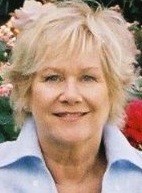In Part 1 of our roundup of finalists in the 2013 City and Regional Magazine Association and Missouri School of Journalism awards, we offered a taste of the stories nominated in the features category. The nominated writers covered an orchestra audition in Boston (Jennie Dorris, Boston magazine); bullying in Washington State (James Ross Gardner, Seattle Met); the infamous Zanesville zoo massacre in Ohio (Jonah Ogles, Cincinnati magazine); items left in tribute at the Vietnam Veterans Memorial in Washington, D.C. (Rachel Manteuffel, Washingtonian); and a long con in Georgia (Thomas Mullen, Atlanta magazine). Today, the Reporting category, with stories about an innocent man, an identity thief, a killer cop, a massive swindle and a concert tragedy. You can find the complete list of finalists here. Winners will be announced at the 37th annual CRMA conference, May 18-20, in Atlanta. Happy reading.
Candidates in the category of Reporting:
 “The Innocent Man,” by Pam Colloff, Texas Monthly, about the wrongful conviction of Michael Morton, imprisoned for 25 years in the death of his wife. (Check back next week for the beginning of Colloff’s exclusive line-by-line for our Annotation Tuesday! series.) An excerpt of "The Innocent Man:"
“The Innocent Man,” by Pam Colloff, Texas Monthly, about the wrongful conviction of Michael Morton, imprisoned for 25 years in the death of his wife. (Check back next week for the beginning of Colloff’s exclusive line-by-line for our Annotation Tuesday! series.) An excerpt of "The Innocent Man:"
 “The Identity Thief,” by Louise Farr, Los Angeles magazine, about the career thief and psychopath Randy Kling. Here's a good Q-and-A with Farr about the story. A peek:
“The Identity Thief,” by Louise Farr, Los Angeles magazine, about the career thief and psychopath Randy Kling. Here's a good Q-and-A with Farr about the story. A peek:
 “In Plain Sight,” by Steven Mikulan, Los Angeles magazine, about cop-turned-killer Stephanie Lazarus, who evaded capture for 23 years.
“In Plain Sight,” by Steven Mikulan, Los Angeles magazine, about cop-turned-killer Stephanie Lazarus, who evaded capture for 23 years.
 “The $53 Million Bamboozle,” by Bryan Smith, Chicago magazine, about a woman who embezzled a staggering amount of money to support her business breeding championship quarter horses. An excerpt:
“The $53 Million Bamboozle,” by Bryan Smith, Chicago magazine, about a woman who embezzled a staggering amount of money to support her business breeding championship quarter horses. An excerpt:
 “The Collapse,” by Evan West, Indianapolis Monthly, about the deadly stage collapse at the Indiana State Fair. A taste:
“The Collapse,” by Evan West, Indianapolis Monthly, about the deadly stage collapse at the Indiana State Fair. A taste:
Candidates in the category of Reporting:
 “The Innocent Man,” by Pam Colloff, Texas Monthly, about the wrongful conviction of Michael Morton, imprisoned for 25 years in the death of his wife. (Check back next week for the beginning of Colloff’s exclusive line-by-line for our Annotation Tuesday! series.) An excerpt of "The Innocent Man:"
“The Innocent Man,” by Pam Colloff, Texas Monthly, about the wrongful conviction of Michael Morton, imprisoned for 25 years in the death of his wife. (Check back next week for the beginning of Colloff’s exclusive line-by-line for our Annotation Tuesday! series.) An excerpt of "The Innocent Man:"Six weeks later, on the morning of Wednesday, August 13, Michael rose before dawn and dressed for work, quietly moving around the bedroom so as not to wake Christine. They had celebrated his birthday the night before, and it had been a fun evening at first. They brought Eric with them to the City Grill, a trendy restaurant in downtown Austin, for a rare night out. Michael and Christine smiled at each other as their son, now the picture of health, ate from his mother’s plate and then dug into a bowl of ice cream. Eric nodded off in the car on the way home, and when they arrived, Michael carried him to his room and tucked him in. Once he and Christine were alone, Michael put on an adult video that he had rented for the occasion, hoping to spark some romance. But not long after they began watching the movie, Christine fell asleep on the living room floor. Hurt and angry, Michael retreated to the bedroom without her. Later, when she came to bed, she leaned over and kissed him. “Tomorrow night,” she promised.
 “The Identity Thief,” by Louise Farr, Los Angeles magazine, about the career thief and psychopath Randy Kling. Here's a good Q-and-A with Farr about the story. A peek:
“The Identity Thief,” by Louise Farr, Los Angeles magazine, about the career thief and psychopath Randy Kling. Here's a good Q-and-A with Farr about the story. A peek:Only the boulder-covered mountains and steep Santa Susana Pass, looming over Simi Valley’s patchwork of housing tracts, hint at the area’s rugged history. The old Butterfield stagecoach used to carry mail between Los Angeles and San Francisco along Devil’s Slide here, so dangerous that horses had to be blindfolded to keep them from getting spooked. One hundred years later, Charles Manson and his benighted followers set up camp at Spahn Ranch in the Devil’s Canyon area of the Simi Hills, not far from where Bill and Lori would settle below the hum of the Ronald Reagan Freeway.
Lori was doing laundry while Ryan, seven at the time, played computer games downstairs. He called out that an instant message had arrived for her. It came from Bmrmn67—nobody she recognized. More IMs dropped clues. Bmrmn67 knew her ring size, 4¼, and that she was a Republican. (“I support George W. 100 percent,” he would write later.) Finally Lori guessed: Randy Kling.
 “In Plain Sight,” by Steven Mikulan, Los Angeles magazine, about cop-turned-killer Stephanie Lazarus, who evaded capture for 23 years.
“In Plain Sight,” by Steven Mikulan, Los Angeles magazine, about cop-turned-killer Stephanie Lazarus, who evaded capture for 23 years.During the Van Nuys homicide team’s four-month investigation, Lazarus was winding down a cold case of her own. “We had recovered stolen property from a receiver—odds and ends,” says Don Hrycyk. “One of the pieces was a painting with a name on the back. We hunted down the home where this elderly woman lived in the Wilshire District. The place was padlocked, though.” The detectives learned that the woman, Tamara Guinkh, had been suspiciously spirited away to a nursing home and her property removed by an unknown man. “This case got into elder abuse and real estate fraud,” Hrycyk says. “Steph dived into it for three years and put together a great case.”
Guinkh, a Shanghai-born White Russian, had been a concert pianist before becoming a patron of the Los Angeles Philharmonic. She died in 2007 during Lazarus’s investigation, and her unclaimed body lay warehoused in a hospital morgue. Lazarus arranged a funeral service for the forgotten woman at Hollywood’s Beth Olam cemetery and even rounded up detectives to attend the burial.
As Lazarus was finishing the case, a special LAPD surveillance team began following her, waiting for the detective to discard something with her DNA on it in a public place. After nearly two weeks, at a Simi Valley Costco in May, Lazarus tossed a soda cup and straw into a trash can. Days later Bub got the call from the SID lab. After hanging up, he notified his crew and prepared to begin briefing the chain of command, a climb that would conclude downtown at the district attorney’s office. However long the meetings would last that day, Bub knew his team’s role was over. By nightfall the cold case had been handed to the Robbery Homicide Division. No. 5 had become Stephanie Lazarus.
 “The $53 Million Bamboozle,” by Bryan Smith, Chicago magazine, about a woman who embezzled a staggering amount of money to support her business breeding championship quarter horses. An excerpt:
“The $53 Million Bamboozle,” by Bryan Smith, Chicago magazine, about a woman who embezzled a staggering amount of money to support her business breeding championship quarter horses. An excerpt:By all accounts, Rita Crundwell blossomed both professionally and personally after the divorce. Because Dixon’s comptroller was not elected but appointed, her job was secure. She began to make herself indispensable, tightening her grip on the city’s books and studying the finer points of the complex and politically charged budget process.
By the late 1980s, says Jim Dixon, she controlled virtually everything having to do with the city’s money. She balanced the checkbook. She wrote the checks. She made the deposits. She requested funds. If people wanted money for a project, it was Crundwell to whom they appealed. Financial statements were sent to a City of Dixon post office box that she controlled; when she was away, a relative collected the mail.
That mail would have included statements for the secret account authorities say she created in 1990.
Though it was not a city account, Crundwell tried hard to make it look that way, federal sources say. She designated the City of Dixon as the primary account holder, with a second account holder listed as “RSCDA c/o Rita Crundwell.” Not that she needed to: Apparently no one at City Hall—or at the bank—ever questioned her about it.
 “The Collapse,” by Evan West, Indianapolis Monthly, about the deadly stage collapse at the Indiana State Fair. A taste:
“The Collapse,” by Evan West, Indianapolis Monthly, about the deadly stage collapse at the Indiana State Fair. A taste:All day, the sun had warmed AmyLynn Byrd’s face, and a gentle summer breeze had tousled her hair. Now, as she waited for Sugarland, a sudden onslaught of brisk winds picked up grit from the surface of the dirt racetrack, scouring her skin like a sandblaster. Tricia Hammer, who wore contact lenses, struggled to see. Other concertgoers in the Sugarpit were already filing out through the exit. When Byrd and the Hammers heard Richards’s announcement, they decided to stick it out. Maybe they know something we don’t. Then Byrd looked off to her left and saw a dust devil whirling over the track. “I think we should just go,” she said.
As the three of them turned their backs and started to leave the concert, a giant wall of wind smacked the scaffolding above the platform. Darrell Hammer turned to look. The tarp covering the structure rippled violently, and the entire assembly began to sway. Big, cannon-shaped lights up in the rafters rattled, and as he watched, a suspended, circular LED screen began to swing from side to side, like a pendulum. Cables attached to the topmost corners of the structure dragged large concrete slabs along the parking lot next to the stage.


